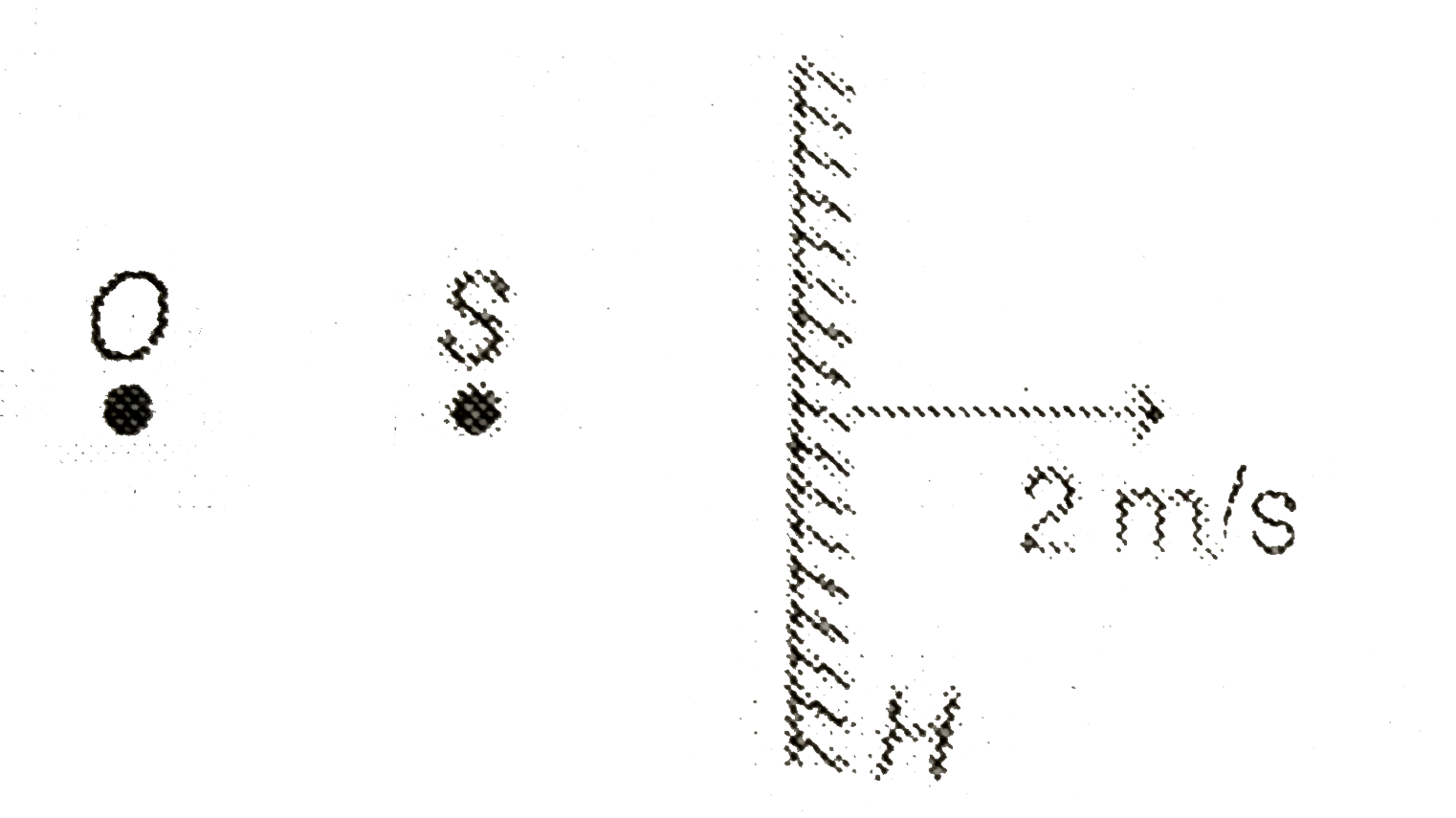An observer moves towards a stationary source of sound with a velocity one-fifth of the velocity of sound. What is the percentage increase in the apparent frequency?
zero
0.5%
5%
20%
The correct Answer is:D
Given υ0=υ5⇒υ0⇒υ0d=3205=64m/s
When observer move towards the stationary source, then
n'=(υ+υ0υ)n
n'=(320+64320)n
n'=(384320)n
n'n=384320
Hence, percentage increases,
(n'−nn)=(384−320320×100)%
=(64320×100)%
=20%
Topper's Solved these Questions
- BOOK - RESONANCE ENGLISHCHAPTER - SOUND WAVESEXERCISE - Solved Examples24videos
SOUND WAVES
- BOOK - RESONANCE ENGLISHCHAPTER - SOUND WAVESEXERCISE - Board Level Exercise33videos
SOUND WAVES
- BOOK - RESONANCE ENGLISHCHAPTER - SIMPLE HARMONIC MOTIONEXERCISE - Exercise28videos
SIMPLE HARMONIC MOTION
- BOOK - RESONANCE ENGLISHCHAPTER - STRING WAVESEXERCISE - Exercise32videos
STRING WAVES
Similar Questions
An observer moves towards a stationary source of sound with a speed (15)th of the speed of sound. The wavelength and frequency of the source emitted are λ and f, respectively. The apparent frequency and wavelength recorded by the observer are, respectively.
View Solution(A): When an observer moves towards a stationary source, the frequency of sound heard is greater than the actual frequency
(R) : Apparent frequency increases because the observer intercepts more number of waves when he moves towards the source.View Solution
Knowledge Check
- Question 1 - Select One
An observer moves towards a stationary source of sound. The percentage change in the apparent frequency is
AzeroB0.05C0.1D0.2 - Question 2 - Select One
A sound source is moving towards a stationary observer with 1/10 of the speed of sound. The ratio of apparent to real frequency is
A109B(109)2C(1110)2D1110
An observer is moving towards the stationary source of sound, then
A. Apparent frequency will be less than the real frequency
B. Apparent frequency will be greater than the real frequency
C. Apparent frequency will be equal to real frequency
D. Only the quality of sound will changeView SolutionAn observer approaches towards a stationary source of sound at constant velocity and recedes away at the same speed. The graph of wavelength observed with time is:
View SolutionA source of sound emitting a note of frequency 200 Hz moves towards an observer with a velocity v equal to the velocity of sound. If the observer also moves away from the source with the same velocity v, the apparent frequency heard by the observer is
View SolutionA stationary sound sound 's' of frequency 334 Hz and a stationary ovserver 'O' are placed near a reflecting suface moving away from the source with velocity 2 m/s as shown in the figure. If the velocity of the sound waves is air is v= 330 m/s the apparent frequency of the echo is
 View Solution
View SolutionWhen the observer moves towards the stationary source with velocity, v1, the apparent frequency of emitted note is f1. When the observer moves away from the source with velocity v1, the apparent frequency is f2. If v is the velocity of sound in air and f1f2 = 2,then vv1 = ?
View SolutionWhen source of sound moves towards a stationary observer, the wavelength of sound received by him
View Solution

